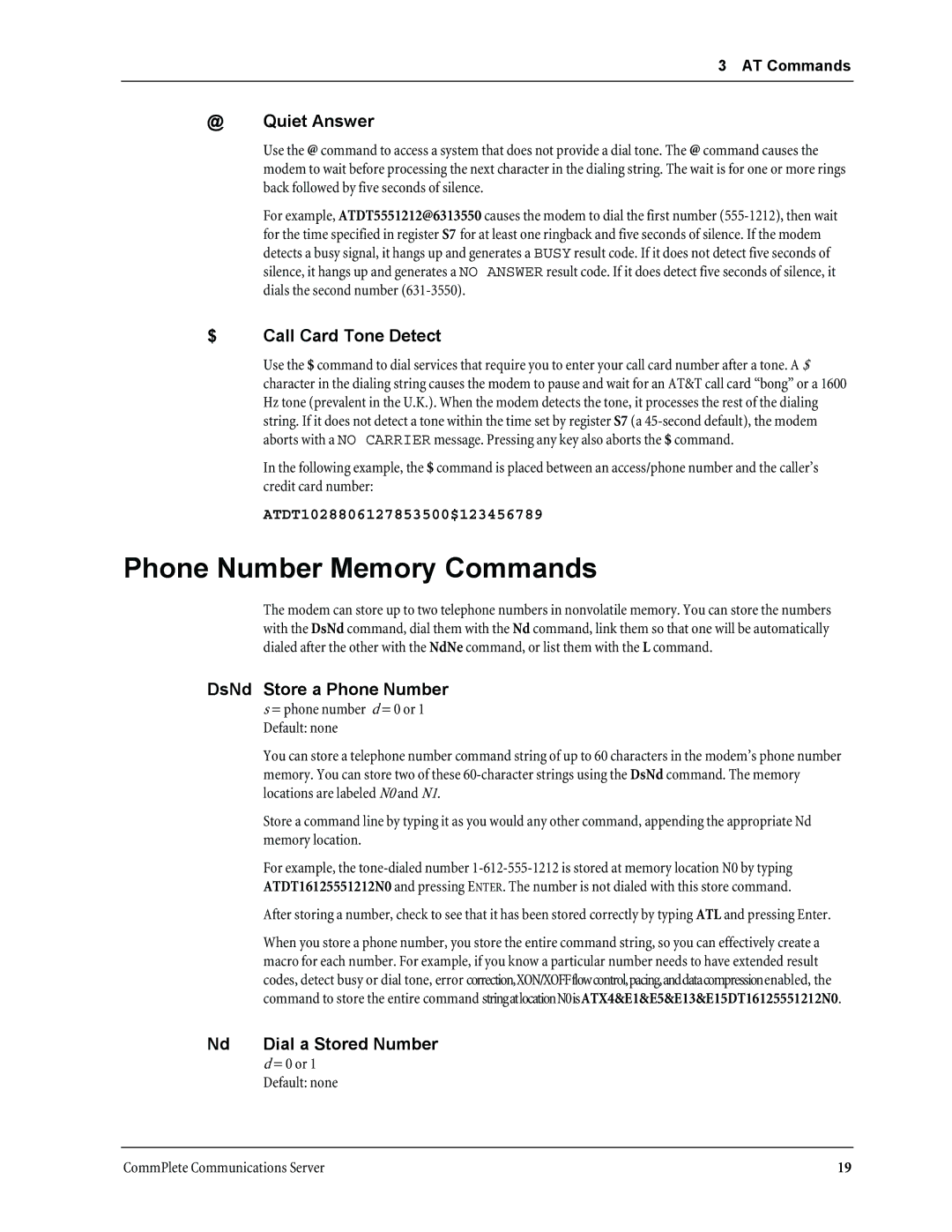
3 AT Commands
@Quiet Answer
Use the @ command to access a system that does not provide a dial tone. The @ command causes the modem to wait before processing the next character in the dialing string. The wait is for one or more rings back followed by five seconds of silence.
For example, ATDT5551212@6313550 causes the modem to dial the first number
for the time specified in register S7 for at least one ringback and five seconds of silence. If the modem detects a busy signal, it hangs up and generates a BUSY result code. If it does not detect five seconds of silence, it hangs up and generates a NO ANSWER result code. If it does detect five seconds of silence, it dials the second number
$ | Call Card Tone Detect |
| Use the $ command to dial services that require you to enter your call card number after a tone. A $ |
| character in the dialing string causes the modem to pause and wait for an AT&T call card “bong” or a 1600 |
| Hz tone (prevalent in the U.K.). When the modem detects the tone, it processes the rest of the dialing |
| string. If it does not detect a tone within the time set by register S7 (a |
| aborts with a NO CARRIER message. Pressing any key also aborts the $ command. |
| In the following example, the $ command is placed between an access/phone number and the caller’s |
| credit card number: |
| ATDT1028806127853500$123456789 |
Phone Number Memory Commands
The modem can store up to two telephone numbers in nonvolatile memory. You can store the numbers with the DsNd command, dial them with the Nd command, link them so that one will be automatically dialed after the other with the NdNe command, or list them with the L command.
DsNd Store a Phone Number
s = phone number d = 0 or 1 Default: none
You can store a telephone number command string of up to 60 characters in the modem’s phone number memory. You can store two of these
Store a command line by typing it as you would any other command, appending the appropriate Nd memory location.
For example, the
ATDT16125551212N0 and pressing ENTER. The number is not dialed with this store command.
After storing a number, check to see that it has been stored correctly by typing ATL and pressing Enter.
When you store a phone number, you store the entire command string, so you can effectively create a macro for each number. For example, if you know a particular number needs to have extended result codes, detect busy or dial tone, error correction,XON/XOFFflowcontrol,pacing,anddatacompressionenabled, the command to store the entire command stringatlocationN0isATX4&E1&E5&E13&E15DT16125551212N0.
Nd Dial a Stored Number
d = 0 or 1 Default: none
CommPlete Communications Server | 19 |
